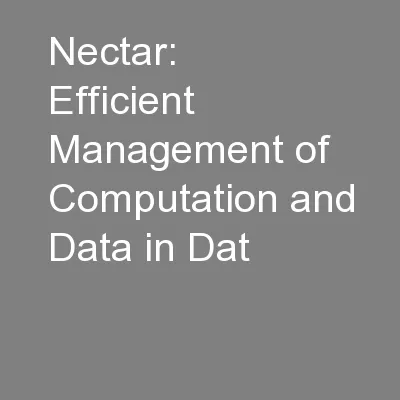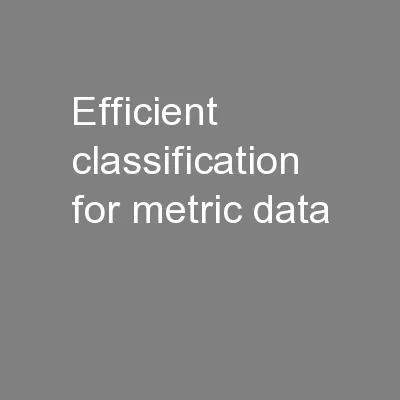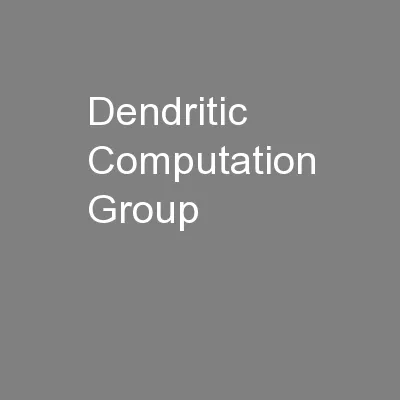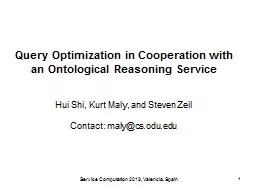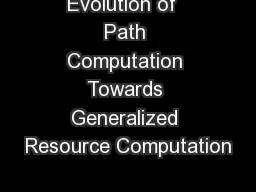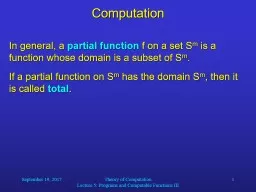PPT-Nectar: Efficient Management of Computation and Data in Dat
Author : tatiana-dople | Published Date : 2016-11-23
Lenin Ravindranath Pradeep Kumar G unda Chandu Thekkath Yuan Yu Li Zhuang Motivation Resources are poorly managed in a data center Computation Storage Redundant
Presentation Embed Code
Download Presentation
Download Presentation The PPT/PDF document "Nectar: Efficient Management of Computat..." is the property of its rightful owner. Permission is granted to download and print the materials on this website for personal, non-commercial use only, and to display it on your personal computer provided you do not modify the materials and that you retain all copyright notices contained in the materials. By downloading content from our website, you accept the terms of this agreement.
Nectar: Efficient Management of Computation and Data in Dat: Transcript
Download Rules Of Document
"Nectar: Efficient Management of Computation and Data in Dat"The content belongs to its owner. You may download and print it for personal use, without modification, and keep all copyright notices. By downloading, you agree to these terms.
Related Documents

